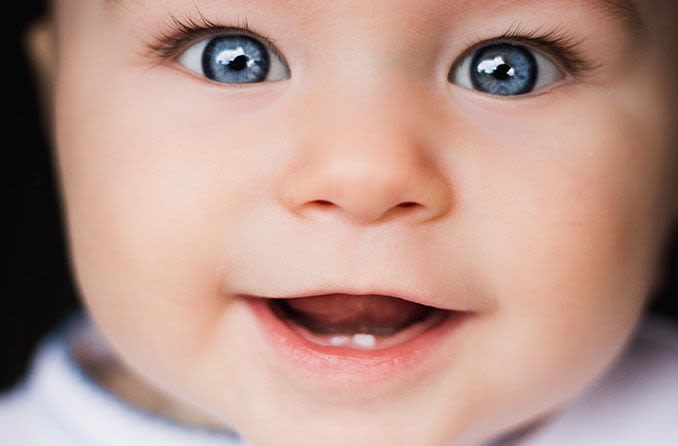The arrival of a newborn baby brings joy and wonder, and one of the first things that captures our attention is their captivating blue eyes. But have you ever wondered why babies’ eyes appear predominantly blue during the early stages of their lives? In this article, we will delve into the fascinating science behind this phenomenon, exploring the role of melanin pigment and the intricate development of the eye. So, let’s embark on a journey of discovery to unravel the mysteries of babies’ eye color!
At birth, babies’ eyes exhibit a charming blue color, which can be attributed to the absence of melanin pigment in their iris—the colored part of the eye. Melanin is the pigment responsible for the coloration of our skin, hair, and eyes. During the initial stages of life, melanin production in the iris is not fully developed, resulting in the temporary blue hue that captivates our hearts.
The color of our eyes is determined by the amount and type of melanin present in the iris. Melanin comes in two variations: eumelanin, which is responsible for brown or black pigmentation, and pheomelanin, which contributes to yellow or red hues. The unique combination and concentration of these pigments define the diverse range of eye colors, including brown, green, hazel, and blue.
As babies grow and develop, melanocytes—the cells responsible for producing melanin—gradually increase their activity. This heightened melanin production influences the coloration of the iris, and the true eye color begins to emerge. The transition from blue to the final eye color is a gradual process that can take several months, with the definitive eye color often not fully established until the child reaches one to two years of age.
Genetics play a significant role in determining eye color. The inheritance of specific genes from parents contributes to the amount and type of melanin produced in the iris. This genetic interplay results in the wide array of eye colors observed across different individuals. It’s fascinating to witness how genetic traits are manifested in the unique eye colors of each child.
It is worth noting that not all babies are born with blue eyes. Some infants have darker eye colors, such as brown or gray, due to a higher concentration of melanin in their iris from birth. These babies’ eye colors are less likely to undergo significant changes as they grow older, and their eye color may remain relatively stable throughout their lives.
The transformation of eye color in babies is a testament to the wonders of nature and the complexity of human genetics. It serves as a visual representation of the intricate genetic makeup and individuality that makes each child special. As parents, witnessing the gradual change in your baby’s eye color can be an exciting and cherished experience, as it highlights their unique characteristics unfolding before your eyes.
While the color of a baby’s eyes may hold intrigue and curiosity, it is essential to remember that eye color does not define a child’s personality, abilities, or potential. It is merely one facet of their overall appearance and individuality. Celebrate the beauty and uniqueness of your baby, recognizing that their eye color, like other physical attributes, is just one part of the amazing journey of growth and development.
So, the next time you find yourself gazing into a newborn’s eyes and marveling at their enchanting blue hue, take a moment to appreciate the intricacies of melanin development and the wonders of nature. Witnessing the transition from blue to their final eye color is a delightful reminder of the ever-changing nature of life and the beauty that lies within each child.
The captivating blue eyes of newborn babies are a temporary wonder, a result of the yet-to-mature melanin production in their iris. As they grow older, the true eye color gradually emerges, shaped by the interplay of genetics and melanin distribution. Embrace the journey of discovery as you watch your little one’s eyes transform into their unique and beautiful hue, celebrating the miracle of life and the marvels of genetics.



